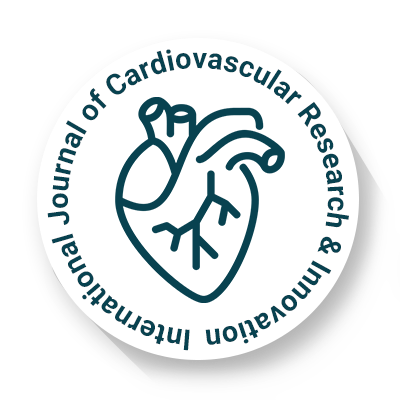
International Journal of Cardiovascular Research & Innovation
OPEN ACCESS

OPEN ACCESS
Stem cell therapy has emerged as a new strategy in cardiovascular medicine, offering a regenerative option for heart disorders that were previously thought to be incurable. Given that heart-related problems account for a significant share of global fatalities, it is critical to investigate novel therapeutic options. The primary objective of stem cell therapy is to repair damaged cardiac tissue, enhance heart function, and provide long-term benefits that outweigh standard drugs.
The premise behind the use of stem cell therapy depends on the injection of multipotent and pluripotent cells, which are capable of transforming into specialized cardio cells. These cells, which are harvested from bone marrow, fat, and induced pluripotent stem cells, possess remarkable regenerative capacity. Once administered to the heart, they initiate the process of tissue repair through angiogenesis, reduced fibrosis, and inflammatory process modulation.
Among the various types of stem cell classifications, mesenchymal stem cells (MSCs) have shown significant promise in the regeneration of cardiovascular tissue. Their abilities to modulate the immune response and their tendency to move toward injured heart tissues make them strong contenders for therapeutic applications. Additionally, cardiac progenitor cells found within the heart are under investigation for their potential to enhance myocardial for their potential to enhance my myocardial integrity by differentiating into functional cardiomyocytes.
Stem cell therapy has become more effective as bioengineering has advanced. Tissue-engineered scaffolds, bioprinting platforms, and extracellular matrix remodeling have all contributed to the creation of cardiac patches and 3D-structured constructions that promote cell survival and integration. These technologies improve the retention and engraftment of donated stem cells, maximizing their regenerative potential.
Another beneficial aspect of stem cell therapy is the role of exosomes and extracellular vesicles in the transfer of therapeutic effects. These nanoscale vesicles, released by stem cells, contain bioactive molecules such as microRNAs, proteins, and growth factors that trigger paracrine responses, thus triggering cellular repair and angiogenesis. The use of exosomes derived from stem cells could provide a cell-free therapeutic approach, which could reduce the risk of immune rejection and alleviate ethical issues associated with whole-cell transplantation.
In spite of these developments, the application of stem cell therapy in the clinic is confronted with several challenges, such as variability in treatment effects, immune compatibility issues, and the requirement of standardized protocols. Additional research and stringent clinical trials are required to overcome these challenges and facilitate the extensive application of stem cell-derived therapies for cardiovascular disease.
The integration of stem cell therapy into mainstream cardiovascular medicine has the potential to transform the treatment of cardiac disease. By tapping into the body's regenerative potential and maximizing biotechnological processes, this form of therapy offers the materials for a successful and more sustained solution. The International Journal of Cardiovascular Research & Innovation is committed to the advancement of research and innovation in this innovative field and the advancement of scientific progress that will propel the future frontier of cardiovascular care.